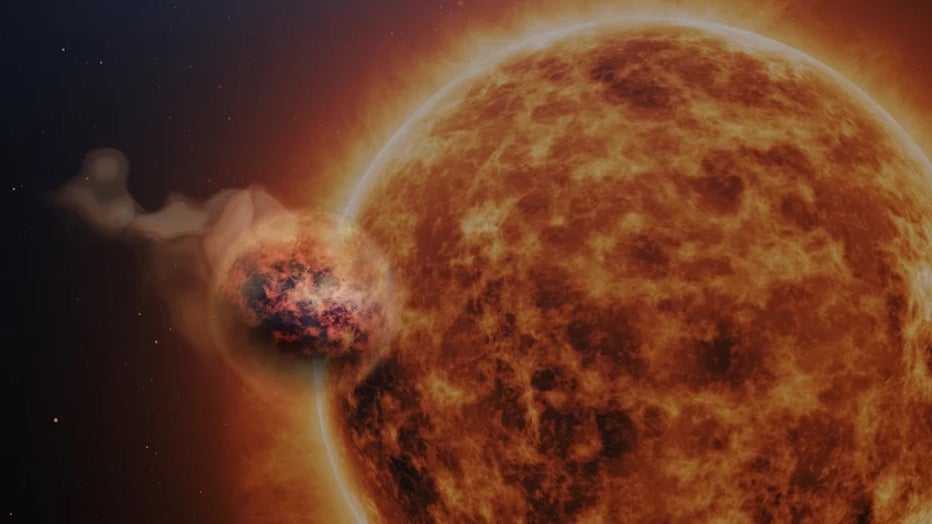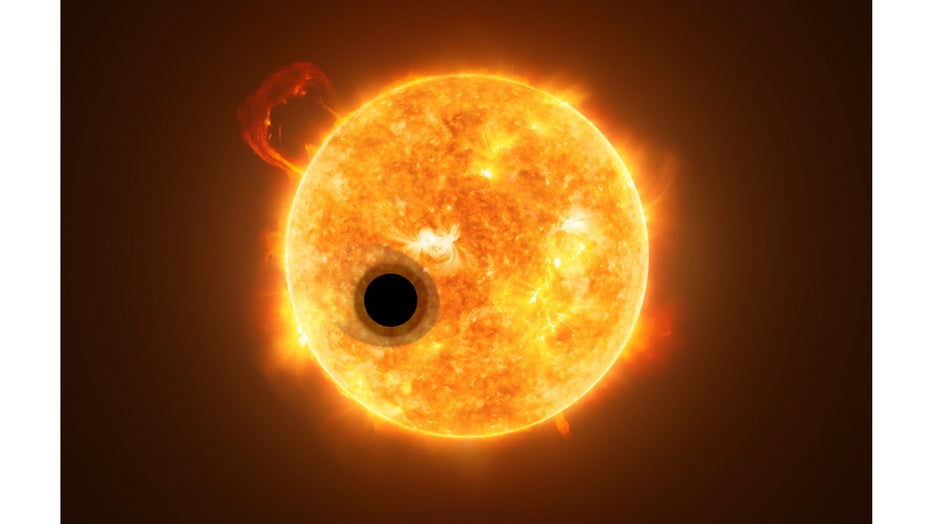NASA's James Webb telescope reveals 'fluffy' planet where it rains sand

See the latest stunning images taken by the James Webb Space Telescope
The James Webb Space Telescope has released more mesmerizing images of the deepest corners of our universe.
Wasp-107b, a giant gas exoplanet known for its "fluffy" atmosphere, has clouds filled with sand that rains down like water does on Earth, a team of European astronomers have discovered.
Using observations from NASA’s revolutionary James Webb Space Telescope (JWST), researchers were able to closely examine the Neptune-like planet – about 200 light years away from Earth – in a way they’ve never been able to before.
What they found was water vapour, sulfur dioxide, and silicate sand clouds, according to the Max Planck Institute for Astronomy, which co-led the study. The study was published in the Nature journal.

Artistic concept of the exoplanet WASP-107b and its parent star. Illustration: LUCA School of Arts, Belgium/ Klaas Verpoest; Science: Achrène Dyrek (CEA and Université Paris Cité, France), Michiel Min (SRON, the Netherlands), Leen Decin (KU Leuven, B
"The discovery of clouds of sand, water, and sulfur dioxide on this fluffy exoplanet by JWST is a pivotal milestone," lead author Leen Decin of KU Leuven said in a news release. "It reshapes our understanding of planetary formation and evolution, shedding new light on our own solar system.
"JWST is revolutionizing exoplanet characterization, providing unprecedented insights at remarkable speed," Decin continued.
Why Wasp-107b is called the ‘fluffy’ planet
Wasp-107b first caught the attention of scientists in 2017 because of its fluff. It’s about 30 times bigger than Earth, though it’s one of the lowest density planets known.
While the planet is about the same size as Jupiter, it has only 12% of Jupiter’s mass, NASA says.

Exoplanet WASP-107b (ESA/Hubble, NASA, and M. Kornmesser)
Wasp-107b is unique and orbits a star slightly cooler and less massive than our sun, researchers said. Because it’s more "fluffy" than the gas giants in our solar system, astronomers can look roughly 50 times deeper into its atmosphere than they can for other planets like Jupiter.
Wasp-107b produces sulfur dioxide, but not methane gas, scientists say, which points to a much warmer planet.
READ MORE: Webb Telescope image of Pandora’s Cluster reveals hidden clues of most distant galaxies yet
Temperatures on the planet are more than 900 degrees Fahrenheit, NASA says. Much like water droplets evacuate on Earth, the sand clouds on Wasp-107b likely mean that the sand droplets "evaporate in deeper, very hot layers."
"The resulting silicate vapor is efficiently lifted up," lead author Michiel Min from Netherlands Institute for Space Research explained in a statement.
James Webb strikes again

People visit Beyond the Light Exhibition, included visuals obtained from the James Webb Space Telescope, in New York, United States on August 15, 2023. (Photo by Fatih Aktas/Anadolu Agency via Getty Images)
Since its launch in December 2021, the $10 billion James Webb Space Telescope has led to many amazing discoveries.
READ MORE: James Webb telescope captures colorful bursts of gas, dust in new image
Astronomers have previously identified clouds made of other substances – like rock, metal or salt, for example – but this is the first time scientists have been able to confirm their chemical composition.
"The value of JWST cannot be overstated: wherever we look with this telescope, we always see something new and unexpected. This latest result is no exception," study co-author Paul Mollière from the Max Planck Institute of Astronomy (MPIA) in Heidelberg, Germany, said in a release.

